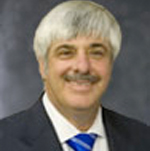
Stanislaus County Supervisor Jim DeMartini is nobody’s patsy. So when Stanislaus County cities presented their growth plans to the Local Agency Formation Commission (LAFCO) at last July’s meeting, DeMartini smelled a rat. “They weren’t plans at all,” he says. “They may as well have been written by the BIA (Building Industry Association).” As far as DeMartini could tell, none of the cities had established firm boundaries.
DeMartini was especially miffed that LAFCO directors couldn’t get a copy of the plan. “All we saw was a large piece of paper showing the cities,” says DeMartini. “There’s nothing to study.”
This was not how DeMartini expected things to go when he was appointed to LAFCO. Known for an almost unnatural work ethic and a dogged pursuit of facts, DeMartini believes that as a LAFCO director, he should follow through on the LAFCO mission, which includes preventing sprawl, protecting farmland and promoting smart growth.
“There isn’t a mayor in any of these cities who cares about farmland,” he says.
And while that might sound like a hasty generalization, the facts show that at least historically, Stanislaus County has a worse than dismal record for protecting farmland. If fact, in much the same way that the city of Modesto has an almost gravitational attraction to the bottom tier, Stanislaus County bottomed out when the American Farmland Trust rated eleven Central Valley counties for conversion of farmland to urban use.
First, the Trust ranked farmland by quality, and found the following:
Of the 15.6 million acres of agricultural land in Central Valley, only 5.4 million acres are high quality farmland. Just 3.2 million acres of this are prime farmland, the best of the best — the land that produces the highest crop yields at the lowest production cost and with the least impact on the environment (for example, because the need for pesticides and irrigation water is lower). Development of high quality farmland forces agriculture onto less desirable land, making it less competitive and increasing its environmental impacts.
After ranking the quality of the farmland, the Trust then looked at which counties were best at protecting high quality farmland and which worst. DeMartini wasn’t surprised to learn that from 1990 to 2000, 82% of the land that was developed in Stanislaus County was high quality farmland. Stanislaus County ranked dead last in this category of the eleven counties studied.
“We have this great natural resource,” says DeMartini. “It’s common sense we should protect it.”
But we’re not protecting our farmland. Instead, we’re converting productive agricultural land, arguably the best in the world, to housing tracts. As we’ve reported here, the most important mechanism for growth is city government, and when city government is dominated by realtor and developer interests, growth is indeed inevitable. Since he’s as good at research as he is at farming his 1200 acres, Jim DeMartini knows it doesn’t have to be this way.
“Napa and Ventura Counties have much harder boundaries than we do,” says DeMartini. “And they do a much better job of controlling sprawl.”
In fact, Napa Valley’s winemakers have had major impacts on Napa County’s land use, in part by resisting the temptations of rising land values. As early as the 1950’s, landowners realized that the kind of residential development that was destroying farmland in the Santa Clara Valley was inevitable in the Napa Valley unless they took political action. By 1968, they had confronted the problem:
In 1968, Napa Valley vintners and others in the community had the forethought to preserve open space and prevent future over-development by enacting the nation’s first Agriculture Preserve. Since its adoption, not one acre of land has been removed from the preserve….Initially the ordinance protected 23,000 acres of agricultural land stretching from Napa in the south to Calistoga. Today, more than 36,000 acres are contained within the Preserve.
Today, most people visualize the Napa Valley as covered in vineyards. In fact, only nine percent of Napa Valley’s total acreage is planted in vineyards, and a mere three percent remains suitable for growing grapes. Had not Napa Valley’s citizens and political leaders recognized the global importance of what is now an internationally famous wine region, those vineyards, like the fertile farmland of the Santa Clara Valley, would be the distant memories of a few old folks’ laments.
Like Jim DeMartini, Brad Barker attended the July LAFCO meeting. Barker is the chairman of the local Yokuts Chapter of the Sierra Club. And like DeMartini, Barker was stunned at the disconnect between city leaders and their constituents. Recently, Barker summed up his reaction with the following statement:
On the issue of protecting farmland, we the people are far ahead of our elected leaders. Just three years ago, the voters of Stanislaus County overwhelmingly approved Measure E to restrict residential growth outside the nine cities. The measure passed with 67% of the vote. A year later the voters of Modesto rejected all five advisory growth measures proposed by the city. The most successful of the five still lost by 60%. The only expansion measure that landowners and developers actively campaigned for lost by 70%.
Barker is especially disturbed at the failure of Stanislaus County cities to enact boundaries that protect farmland.
“The nine cities keep stalling,” he says, “and city leaders keep appointing building-industry friends to the boards and commissions. The only thing saving farmland right now is this horrible recession.”
Former Modesto City Councilman Denny Jackman agrees with DeMartini and Barker that our cities’ mayors have failed to provide the leadership necessary to protect “our best soils.” In a recent letter to the Modesto Bee, Jackman wrote:
Currently, the action can is being kicked down the road as we wait for the so-called “Mayors Plan.” The mayors of the cities expect the public to believe they will have a plan ready by the end of September.
Jackman has observed the failure to protect farmland for decades, even as he’s seen consistent public support for farmland protection.
While the disconnect between citizens and their leaders on issues like sprawl and farmland protection seems puzzling, it shouldn’t be. There are many reasons our leaders are able to avoid responsibility, not the least of which include inattentive local media, who have a vested interest in growth.
The arsenal of those who promote sprawl and pave ag land features many weapons. Political campaigns are often dominated by scandals rather than issues, stealth candidates are skilled at avoiding growth issues while harping on jobs, public safety and government waste, developers sponsor multiple candidates to insure run-offs that favor candidates with the most financial backing, and once in office, politicians and their backers have developed any number of tactics for making sprawl not only look inevitable, but beneficial. In our next segment, we’ll look at some of these tactics and the resultant problems.
NEXT: SCHOOL SCAMS, MIRAGES, AND URBAN (NO)BOUNDARIES.

I don’t suspect that we really need to wait for the Mayors Plan. My bet is we can see a duplicate on record in the San Fernando Valley, circa 1970!
Another outstanding, perceptive and accurate commentary, Eric. It’s good to know that you are an important part in keeping the record straight and accessible to the public.
Hats off to whoveer wrote this up and posted it.
I am curious if Mr. DeMartini has his property in a land preserve with a fixed land price so future farmers can purchase his lands in the far out future?
Clear, infomartive, simple. Could I send you some e-hugs?
this is all well and good – and restricting housing to cities is a fine start – but commercial development should be restricted to the cities as well. If the true goal is farmland preservation – then ALL building, commercial, residential and government should be restricted to only the cities – and if there is to be any expansion – then only to areas where the land not as good. This is the falacy of the “no-growth” / “slow-growth” proponents – all building restricted to the cities – EXCEPT commercial – if it is both – that would be best !